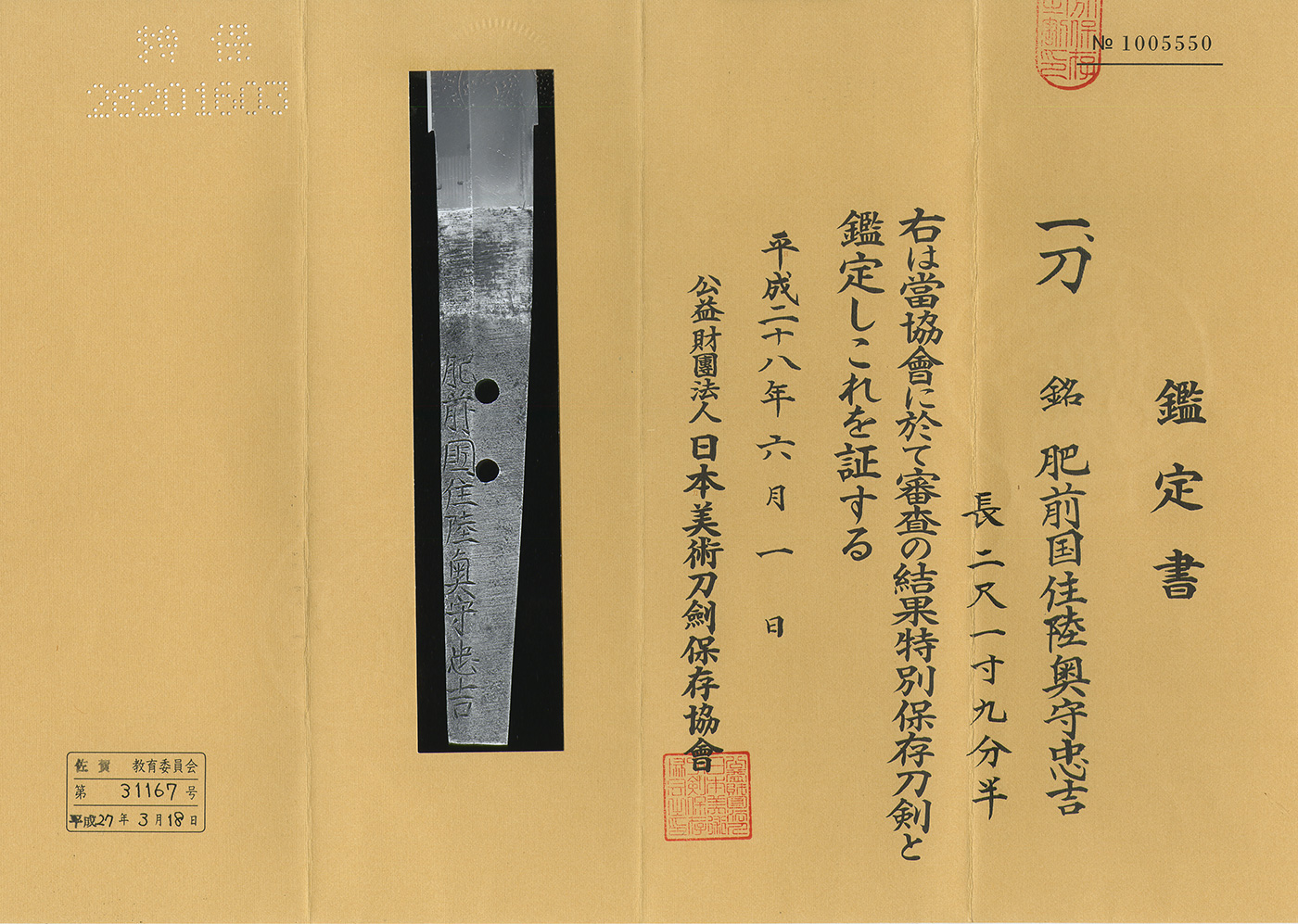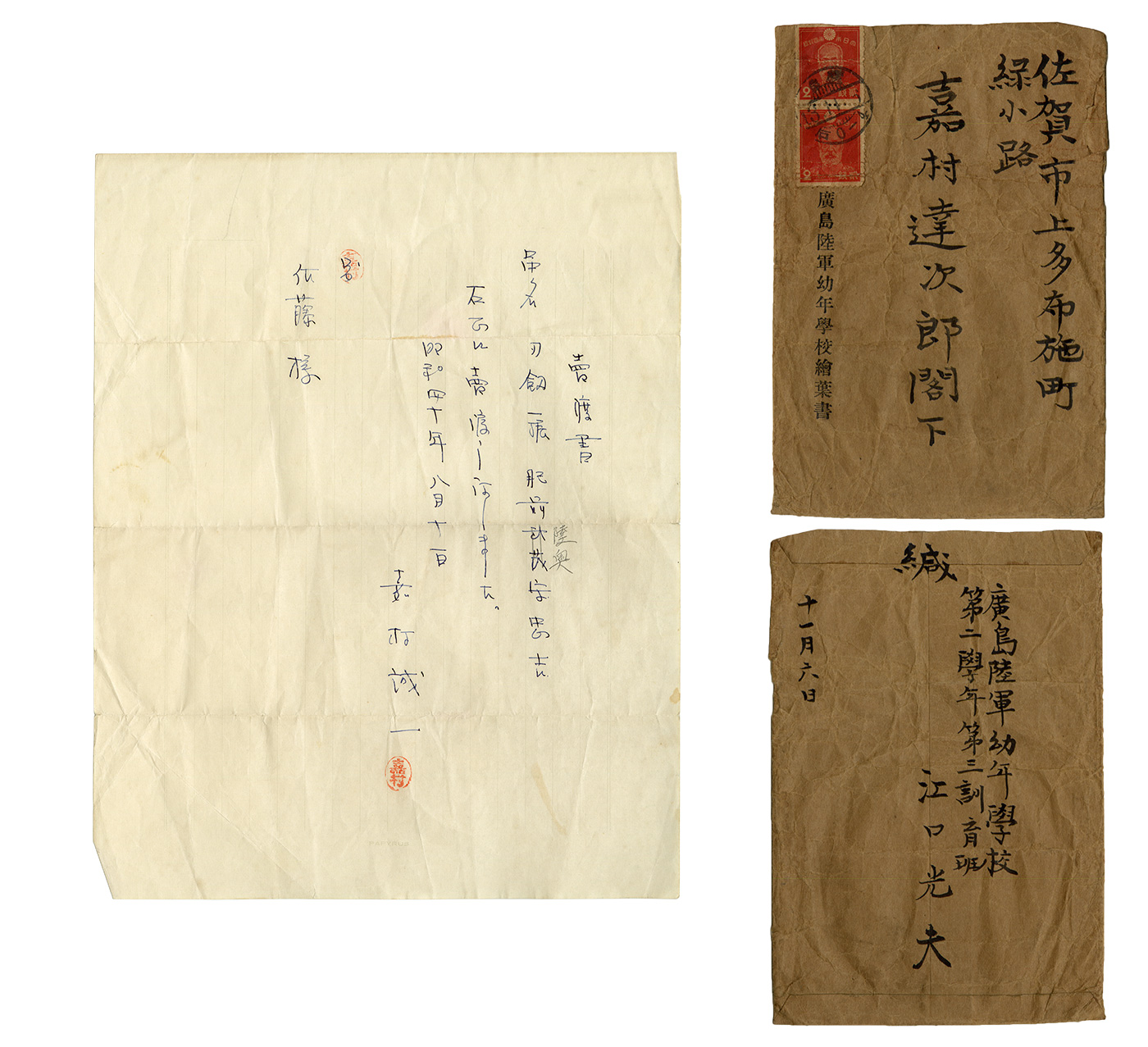Ordering Number:23633
Katana in shirasaya with army gunto Koshirae (NBTHK Tokubetsu Hozon Token)
Inscription: Hizen Koku Ju Mutsu Kami Tadayoshi
Shinto: JyoJyo saku: Hizen
We divide 4 sections for each sword as Saijyo Saku, Jyojyo Saku, Jyo Saku, and Regular Saku.
This piece is ranked as Jyojyo Saku for Mutsu Kami Tadayoshi’s work.
Habaki: copper plate with
Blade length: 66.6 cm
Curvature: 0.9 cm
Mekugi Hole: 2
Width at Base (Motohaba): 3.01 cm
Thickness of rim (Kasane): 1.96 cm
Sword Weight: 720 g
Era: the eary Edo period, around Manji, the late 17th century.
Shape: little wide and thick blade with little long curveture.
Jigane: Fine Ko-itame hada called “Ko-nuka hada”, characteristic of Hizen swords.
Hamon: Niedeki suguha with deep nioikuchi looks foggy.
Features: There is about 2cm of Machiokuri and Suriage, but it retains almost the same shape as when it was made, and the polishing on this blade bring the beauty of this blade well.
Mutsu Kami Tadayoshi, the 3rd generation of Tadayoshi was the son of Tadahiro and the grandson of Tadayoshi the 1st generation. He received the title of Mutsu kami in 1661, and passed away in 1686. His period of making swords was short and he made swords in place of his father for a long time, so there are not many works with his own name. His style is simillar to his grandfather, Tadayoshi the 1st gen, and the jigane is especially beautiful.
Koshirae: Saber Koshirae with Aluminum tsunagi
From Aoi-Art:
Gunto swords with a a tortoiseshell handle like this word belonged to generals. Kamura Tatsujiro, who was the owner of this sword, was a soldier in Saga prefecture, just like the sword, and promoted to major general in 1930. In 1931, an armed conflict between the Japanese and Chinese armies (Manchurian Incident) occurred in China, and his name appears in the records of that incident.
NBTHK Tokubetsu Hozon Paper
Aoi-Art estimation paper
whole oshigata







